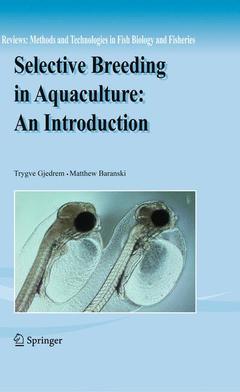The foundation of quantitative genetics theory was developed during the last century and facilitated many successful breeding programs for cultivated plants and t- restrial livestock. The results have been almost universally impressive, and today nearly all agricultural production utilises genetically improved seed and animals. The aquaculture industry can learn a great deal from these experiences, because the basic theory behind selective breeding is the same for all species. The ?rst published selection experiments in aquaculture started in 1920 s to improve disease resistance in ?sh, but it was not before the 1970 s that the ?rst family based breeding program was initiated for Atlantic salmon in Norway by AKVAFORSK. Unfortunately, the subsequent implementation of selective breeding on a wider scale in aquaculture has been slow, and despite the dramatic gains that have been demonstrated in a number of species, less than 10% of world aquaculture production is currently based on improved stocks. For the long-term sustainability of aquaculture production, there is an urgent need to develop and implement e- cient breeding programs for all species under commercial production. The ability for aquaculture to successfully meet the demands of an ever increasing human p- ulation, will rely on genetically improved stocks that utilise feed, water and land resources in an ef?cient way. Technological advances like genome sequences of aquaculture species, and advanced molecular methods means that there are new and exciting prospects for building on these well-established methods into the future.

